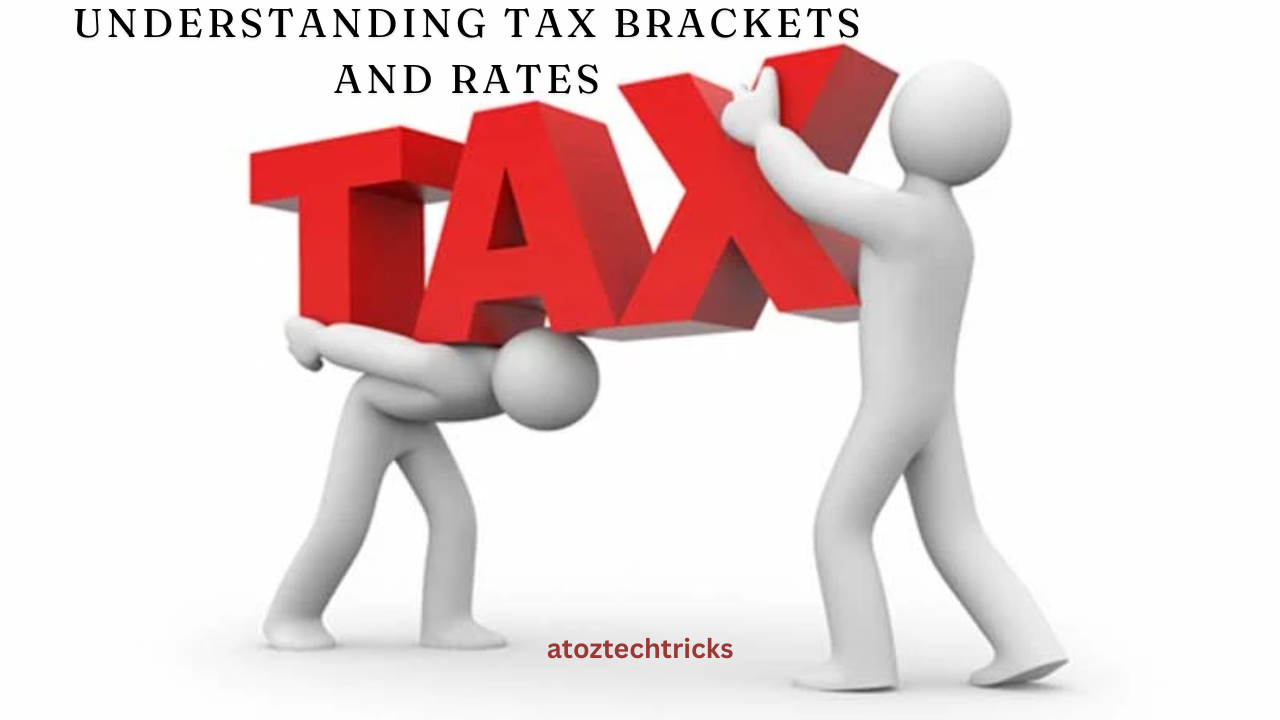Understanding Tax Brackets and Rates: A Comprehensive Guide
Understanding tax brackets and rates is crucial for effective financial planning and tax management. Tax brackets determine the rate at which your income is taxed, while tax rates influence how much you owe to the government. This comprehensive guide explores the intricacies of tax brackets and rates, offering insights into how they work, how they impact your finances, and how to optimize your tax strategy.
1. Basics of Tax Brackets and Rates
Tax brackets and rates are fundamental components of a progressive tax system, where individuals and businesses are taxed at increasing rates based on their income levels. Understanding these concepts helps in managing your tax liabilities effectively and planning for your financial future.
1.1 What Are Tax Brackets?
Tax brackets are ranges of income that are taxed at specific rates. In a progressive tax system, as your income increases, the rate at which you are taxed also increases, but only for the portion of income that falls within each bracket.
Example:
- 10% Bracket: Income from $0 to $9,875
- 12% Bracket: Income from $9,876 to $40,125
- 22% Bracket: Income from $40,126 to $85,525
In this system, if your income is $50,000, you don’t pay 22% on the entire amount but only on the portion above the threshold of $40,125.
1.2 What Are Tax Rates?
Tax rates are the percentages at which income is taxed. The rates are applied to the income that falls within each bracket. Tax rates are usually divided into marginal rates, which apply to income within each bracket, and effective rates, which reflect the average rate of tax paid across all income.
1.3 Marginal vs. Effective Tax Rates
- Marginal Tax Rate: The rate applied to the last dollar of income earned. It is the rate at which the next dollar of income will be taxed.
- Effective Tax Rate: The average rate of tax paid on total income. It is calculated by dividing total tax liability by total income.
Example: If you earn $50,000 and are taxed at different rates for different portions of your income, your marginal tax rate might be 22%, but your effective tax rate will be lower because you are paying lower rates on the income below the 22% threshold.
)
2. How Tax Brackets Work
Understanding how tax brackets work is essential for effective tax planning. Here’s a step-by-step breakdown of the process:
2.1 Determine Your Taxable Income
Taxable income is the amount of income subject to tax after deductions and exemptions. It includes wages, salaries, bonuses, and other sources of income, minus any adjustments or deductions.
Example: If you have a gross income of $60,000 and claim $10,000 in deductions, your taxable income is $50,000.
2.2 Apply the Tax Brackets
Once you have your taxable income, apply the tax brackets to determine your total tax liability. The income is divided among the different tax brackets, and the corresponding rates are applied to each portion.
Example: For 2024, the tax brackets for a single filer in the U.S. might look like this:
- 10% on income up to $11,000
- 12% on income from $11,001 to $44,725
- 22% on income from $44,726 to $95,375
If your taxable income is $50,000:
- The first $11,000 is taxed at 10%
- The income from $11,001 to $44,725 is taxed at 12%
- The remaining income from $44,726 to $50,000 is taxed at 22%
2.3 Calculate Your Tax Liability
To calculate your total tax liability, apply the rates to each portion of your income and sum the results.
Example: For a taxable income of $50,000:
- Tax on the first $11,000: 11,000×10%=1,10011,000 \times 10\% = 1,100
- Tax on the income from $11,001 to $44,725: (44,725−11,000)×12%=4,050(44,725 – 11,000) \times 12\% = 4,050
- Tax on the income from $44,726 to $50,000: (50,000−44,725)×22%=1,164.50(50,000 – 44,725) \times 22\% = 1,164.50
Total tax liability: 1,100+4,050+1,164.50=6,314.501,100 + 4,050 + 1,164.50 = 6,314.50
Investing in Real Estate: A Comprehensive Guide to Building Wealth
3. Tax Brackets for Different Filing Statuses
Tax brackets vary depending on your filing status, such as single, married filing jointly, married filing separately, or head of household. Each status has different income ranges for tax brackets.
3.1 Single Filers
Single filers have their own set of tax brackets, which typically range from lower income thresholds to higher ones.
Example: For 2024, single filers might have tax brackets like:
- 10% up to $11,000
- 12% from $11,001 to $44,725
- 22% from $44,726 to $95,375
3.2 Married Filing Jointly
Married couples filing jointly have combined income thresholds and often benefit from wider brackets compared to single filers.
Example: For 2024, married couples filing jointly might have:
- 10% up to $22,000
- 12% from $22,001 to $89,450
- 22% from $89,451 to $190,750
3.3 Married Filing Separately
Married individuals filing separately generally have tax brackets that are half of those for married couples filing jointly.
Example: For 2024, married filing separately might have:
- 10% up to $11,000
- 12% from $11,001 to $44,725
- 22% from $44,726 to $95,375
3.4 Head of Household
Head-of-household filers have their own set of tax brackets, typically benefiting from wider ranges than single filers but not as wide as married couples filing jointly.
Example: For 2024, the head of household might have:
- 10% up to $15,700
- 12% from $15,701 to $59,850
- 22% from $59,851 to $95,350

4. Impact of Tax Brackets on Financial Planning
Understanding tax brackets is essential for making informed financial decisions and optimizing your tax situation. Here’s how tax brackets can influence your financial planning:
4.1 Income Tax Planning
Tax brackets influence decisions about income timing and management. For instance, if you’re close to moving into a higher tax bracket, you might consider deferring income or accelerating deductions to minimize your taxable income.
4.2 Deductions and Credits
Tax brackets affect the value of deductions and credits. Higher income may lead to higher deductions or credits, but also potentially higher tax liabilities. Strategies like maximizing retirement contributions or itemizing deductions can be beneficial.
4.3 Investment Decisions
Tax brackets impact investment decisions, such as the choice between taxable and tax-deferred accounts. Understanding your tax bracket helps in planning investment income and capital gains, and optimizing tax efficiency.
4.4 Retirement Planning
Retirement planning involves considering future tax brackets and how withdrawals from retirement accounts will be taxed. Understanding your current and expected future tax brackets can guide your strategy for contributing to and withdrawing from retirement accounts.
Choosing Between Active and Passive Investing: A Comprehensive Guide
5. Strategies for Managing Tax Brackets
Effective management of tax brackets involves strategies to minimize tax liability and optimize financial outcomes.
5.1 Tax-Deferred Accounts
Contributing to tax-deferred accounts like traditional IRAs or 401(k)s can reduce taxable income in the current year, potentially keeping you in a lower tax bracket.
5.2 Tax-Exempt Accounts
Utilizing tax-exempt accounts, such as Roth IRAs, allows for tax-free growth and withdrawals, which can be advantageous when managing future tax liabilities.
5.3 Income Splitting
Income splitting involves distributing income among family members in lower tax brackets to reduce overall family tax liability. This can be achieved through gifts or transfers of income-producing assets.
5.4 Timing of Income and Deductions
Timing income and deductions strategically can help manage your taxable income and avoid crossing into higher tax brackets. For example, deferring bonuses or accelerating charitable contributions can be effective.
5.5 Tax Credits
Taking advantage of available tax credits, such as education credits or energy-efficient home credits, can directly reduce your tax liability and affect your overall tax bracket.
6. Recent Changes and Future Trends
Tax laws and brackets are subject to change based on legislation and economic conditions. Staying informed about recent changes and future trends is crucial for effective tax planning.
6.1 Recent Legislative Changes
Tax laws and brackets can change annually due to new legislation or adjustments for inflation. Stay updated on current tax laws and bracket adjustments to ensure accurate planning.
6.2 Impact of Economic Conditions
Economic conditions, such as inflation or changes in government spending, can influence tax policy and bracket adjustments. Monitoring economic trends helps anticipate potential changes in tax brackets and rates.
6.3 Future Trends in Taxation
Potential future trends include tax reform proposals, shifts in tax policy, and changes in tax brackets. Keeping abreast of proposed changes can help in long-term financial planning and adaptation.

Understanding tax brackets and rates is essential for effective tax planning and financial management. By comprehending how tax brackets work, how they impact your finances, and the strategies for managing them, you can make informed decisions and optimize your tax situation. Stay informed about changes in tax laws, consider the impact on your financial goals, and consult with tax professionals to navigate the complexities of the tax system effectively. With careful planning and strategic management, you can achieve a more efficient and favourable tax outcome.




Post Comment